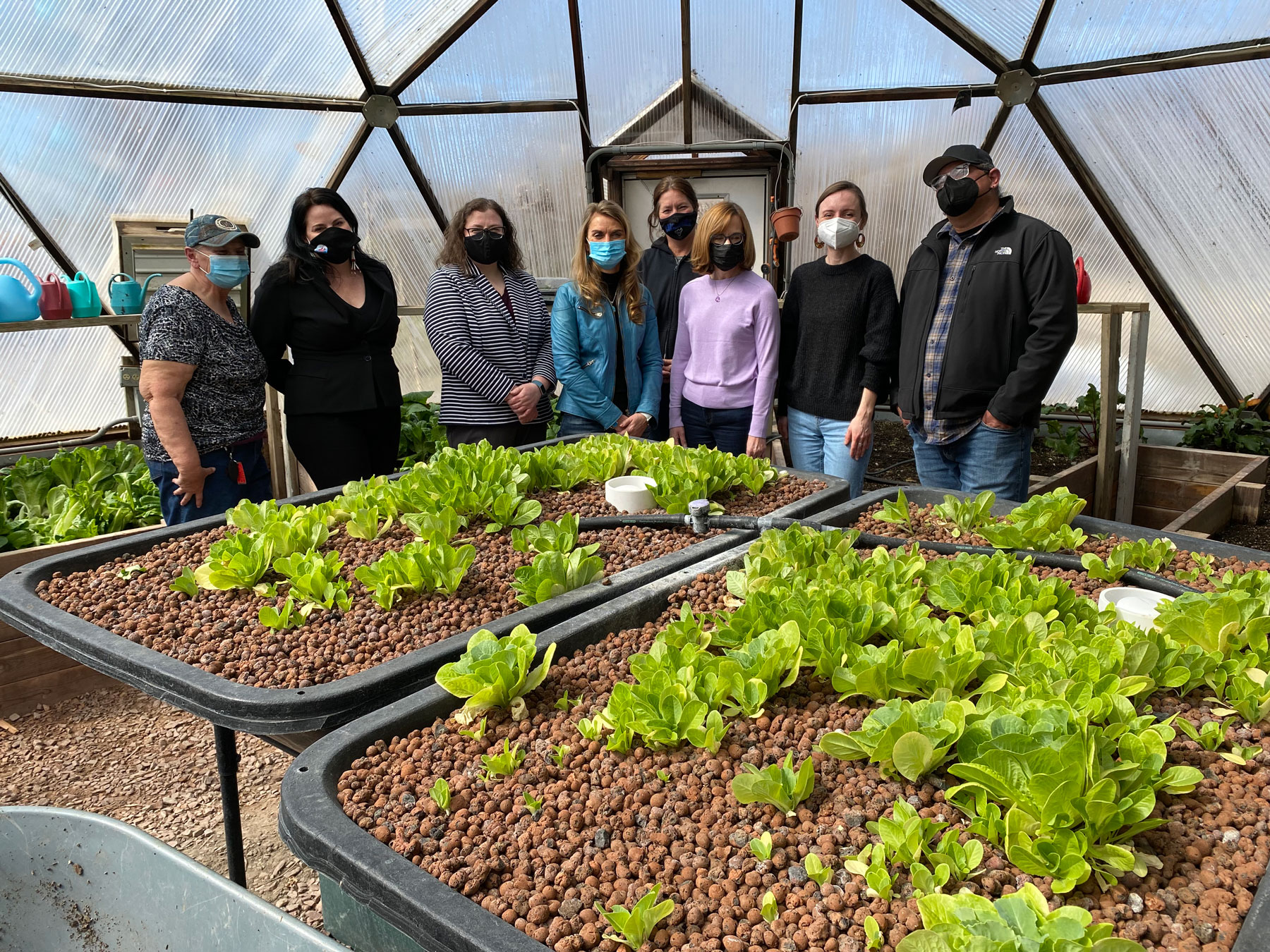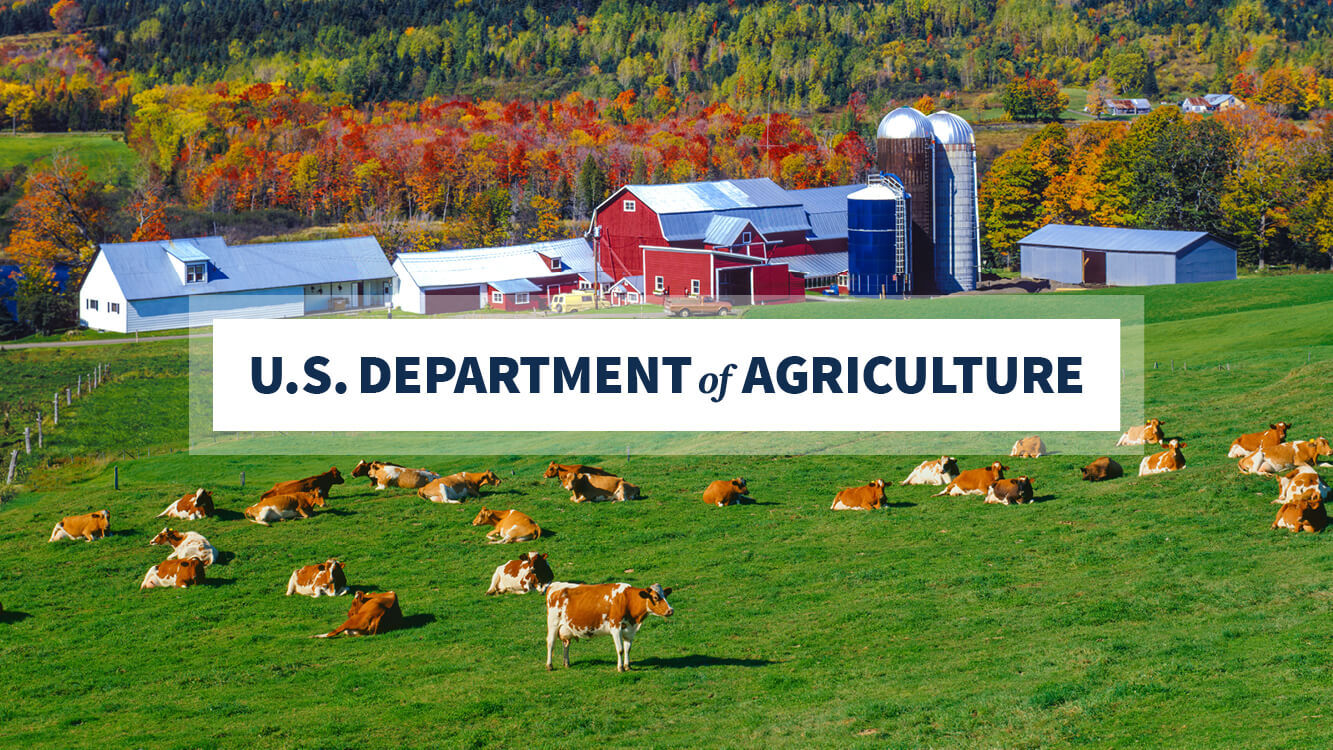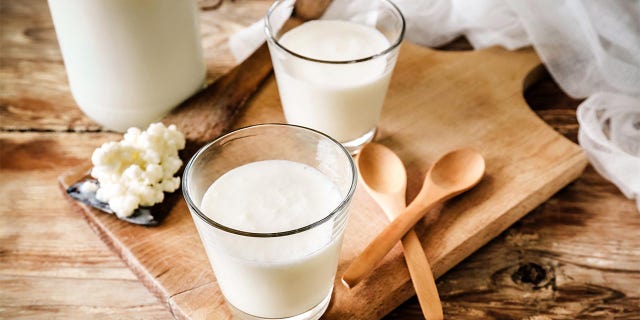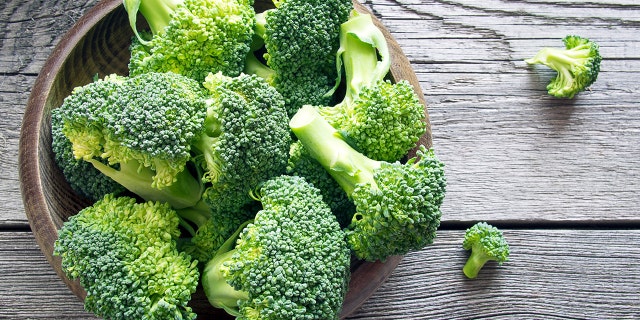[unable to retrieve full-text content]
Pritzker Signs Legislation Bolstering Access to Healthy Food in Schools 1340 WJOLfrom "healthy food" - Google News https://ift.tt/9AU7m0G
via IFTTT
[unable to retrieve full-text content]
Pritzker Signs Legislation Bolstering Access to Healthy Food in Schools 1340 WJOL[unable to retrieve full-text content]
Visit Local Farmers Markets to Help with Complete Nutrition Putnam County OnlineSleep duration is now considered an essential component for ideal heart and brain health. Life's Essential 8™ cardiovascular health score replaces Life's Simple 7™, according to a new Presidential Advisory, Life's Essential 8 -- Updating and Enhancing the American Heart Association's Construct on Cardiovascular Health, published today in Circulation, the Association's flagship, peer-reviewed journal.
Other updates to the measures of optimal cardiovascular health, now for anyone ages 2 and older, include a new guide to assess diet; accounting for exposure to secondhand smoke and vaping; using non-HDL cholesterol instead of total cholesterol to measure blood lipids; and expanding the blood sugar measure to include hemoglobin A1c, a key measure to assess Type 2 diabetes risk.
Cardiovascular disease is the number one cause of death in the U.S. and globally. According to the Association's 2022 Heart Disease and Stroke Statistics Update, approximately 121.5 million people in the U.S. have high blood pressure, 100 million have obesity, more than 28 million people have Type 2 diabetes, and only 1 in 4 adults reported achieving the physical activity and exercise recommended in the U.S. Department of Health and Human Services' Physical Activity Guidelines for Americans, 2nd edition. Various research studies over the past two decades indicate more than 80% of all cardiovascular events may be prevented by healthy lifestyle and management of known cardiovascular risk factors.
"The new metric of sleep duration reflects the latest research findings: sleep impacts overall health, and people who have healthier sleep patterns manage health factors such as weight, blood pressure or risk for Type 2 diabetes more effectively," said American Heart Association President Donald M. Lloyd-Jones, M.D., Sc.M., FAHA, who led the advisory writing group and is chair of the department of preventive medicine, the Eileen M. Foell Professor of Heart Research and professor of preventive medicine, medicine and pediatrics at Northwestern University's Feinberg School of Medicine in Chicago. "In addition, advances in ways to measure sleep, such as with wearable devices, now offer people the ability to reliably and routinely monitor their sleep habits at home."
The Association first defined the 7 metrics for cardiovascular health in 2010 to identify the specific health behaviors and health factors that drive optimal heart and brain health. Brain health in relation to cardiovascular health was defined in a 2017 American Heart Association Presidential Advisory. It was further acknowledged as an important component of optimal cardiovascular health in the Association's January 2021 Scientific Statement on the mind-heart-body connection. Findings from both papers are incorporated into Life's Essential 8™.
After 12 years and more than 2,400 scientific papers on the topic, new discoveries in heart and brain health and in the ways to measure cardiovascular health provided an opportunity to revisit each health component in more detail. Four of the original metrics have been redefined for consistency with newer clinical guidelines or compatibility with new measurement tools. Also, the scoring system can now be applied to anyone ages 2 and older.
advertisement
The Life's Essential 8™ components of optimal cardiovascular health are divided into two major areas -- health behaviors and health factors. Health behaviors include diet, physical activity, nicotine exposure and sleep. Health factors are body mass index, cholesterol levels, blood sugar and blood pressure. "The idea of optimal cardiovascular health is important because it gives people positive goals to work toward at any stage of life," said Lloyd-Jones.
"Life's Simple 7™ has served as a proven, powerful tool for understanding how to achieve healthy aging and ways to improve cardiovascular health while decreasing the risks of developing heart disease and stroke, as well as cancer, dementia and many other chronic diseases," he said. "Given the evolving research, it was important to address some limitations to the original metrics, particularly in ways they've been applied to people from diverse racial and ethnic populations."
Lloyd-Jones explained that some of the previous metrics, such as diet, were not as sensitive to differences among people, or as responsive to changes over time within a single individual. "We felt it was the right time to conduct a comprehensive review of the latest research to refine the existing metrics and consider any new metrics that add value to assessing cardiovascular health for all people."
Life's Essential 8™ includes:
Each component of Life's Essential 8™, which is assessed by the My Life Check tool, has an updated scoring system ranging from 0 to 100 points. The overall cardiovascular health score from 0 to 100 points is the average of the scores for each of the 8 health measures. Overall scores below 50 indicate "poor" cardiovascular health, and 50-79 is considered "moderate" cardiovascular health. Scores of 80 and above indicate "high" cardiovascular health. The advisory recommends measuring cholesterol, blood sugar, blood pressure, height and weight at least every five years for the most complete and accurate Life's Essential 8™ score.
The writing group also reviewed data about the impacts of stress, mental health and social determinants of health, such as access to health care, income or education level, and structural racism, which are critical to understanding the foundations of health, particularly among people from diverse racial and ethnic populations.
"We considered social determinants of health carefully in our update and determined more research is needed on these components to establish their measurement and inclusion in the future," said Lloyd-Jones. "Nonetheless, social and structural determinants, as well as psychological health and well-being, are critical, foundational factors in an individual's or a community's opportunity to preserve and improve cardiovascular health. We must consider and address all of these issues for people to have the opportunity for a full, healthy life as measured by Life's Essential 8™."
"Life's Essential 8™ is a major step forward in our ability to identify when cardiovascular health can be preserved and when it is sub-optimal. It should energize efforts to improve cardiovascular health for all people and at every life stage," Lloyd-Jones concluded.
/cloudfront-us-east-1.images.arcpublishing.com/gray/NQLGTH4IMRH6JL5ZBMWJKKK47Q.jpg)
We continue our healthy living segments with USA Health. Chelsey spoke to Courtney Thomson, RN. She discusses the upcoming Safe Sitter courses. Courtney answers the following questions in the clip above:
For more information, visit USA Health online.
---
Download the FOX10 Weather App. Get life-saving severe weather warnings and alerts for your location no matter where you are. Available free in the Apple App Store and the Google Play Store.
Copyright 2022 WALA. All rights reserved.
/cloudfront-us-east-1.images.arcpublishing.com/gray/BYPT3CGFPZAL5AZ33Z4TSP6E6E.bmp)
ILLINOIS (KFVS) - Governor JB Pritzker signed a new law enabling school districts to further partnerships with food providers that prioritize the health of students.
According to the governor’s office, House Bill 4813 says food service providers that participate in any of the USDA’s child nutrition programs are exempt from contract bidding requirements.
“Illinois students deserve healthy, sustainable food options at every turn,” said Gov. Pritzker. “Schools are a haven. They are where our state’s children spend most of their time outside of the home, and our schools provide reliable, consistent meals for students, day in and day out. With this legislation, Illinois’ schools will be able to serve nutritious food options without having to jump through unnecessary, bureaucratic hoops.”
Earlier this month, Gov. Pritzker established the Healthy Foods Access Program, expanding access to healthy foods in underserved areas.
“Improving access to healthy food options in school is essential in our commitment to ensure that our children have what they need to be well and supported as they grow and learn,” said Lt. Governor Juliana Stratton. “In Illinois, we put children and education first, and we are doing that by providing students the healthy, nourishing, and equitable environments they need to develop to their full potential.”
Copyright 2022 KFVS. All rights reserved.
Jun 29, 2022

(left to right) Thunder Valley Executive Director Tatewin Means, FNS Mountain Plains Regional Administrator Cheryl Kennedy, FNS Administrator Cindy Long and Thunder Valley Deputy Director Lynn Cuny display fresh eggs from the Thunder Valley chicken coop.
When applying an equity lens to nutrition programs, it is essential for policymakers to orient themselves toward the perspective of all communities they serve. We must actively take the time to see and listen to truly understand historical inequities that exist, so that we may be better positioned to address them.
I am grateful to the Oglala Sioux Tribe for recently welcoming me to visit their land to learn from their tribal members. This spring, I traveled to Pine Ridge Reservation to gain a hands-on understanding of tribal food sovereignty efforts and how USDA programs play a supporting role.
The Pine Ridge food system consists of a network of tremendous assets, from grassroots movements to revive traditional foods such as bison and wild timpsila (prairie turnips), to more modern crops and season-extending agriculture techniques.
These two approaches combine in harmony through the work of Thunder Valley Community Development Corporation, where wild chokecherry trees are being cultivated adjacent to a chicken coop and a geothermal greenhouse, providing eggs and produce to the community.
The Red Cloud Indian School is making similar strides, building youth capacity through USDA’s Farm to School Grant Program. Student interns maintain cropland and a greenhouse operation to produce food and their teach peers about food sovereignty.

USDA officials tour the greenhouse at Red Cloud Indian School in Pine Ridge. The school operates the greenhouse as part of the USDA Farm to School Program.
In a remote area like Pine Ridge, access to healthy foods can be a barrier to nutrition security, but USDA programs support tribal efforts to reach all members. The Food Distribution Program on Indian Reservations (FDPIR) provides commodity foods for participants at the warehouse in Pine Ridge and offers tailgate deliveries to communities on the reservation.
And through a cooperative agreement, USDA is funding a pilot project to test online ordering for WIC participants from the Buche Foods grocery store in Pine Ridge.
My visit to the Pine Ridge Reservation concluded with dinner and storytelling with leaders from the Wakpamni Lake Community, whose geothermal greenhouse produces nutrient-rich micro-greens.
When we take time to listen and learn from each other, we can effectively partner to put nutrition security within reach for all and move us ever closer to more equitable food systems.
/cloudfront-us-east-2.images.arcpublishing.com/reuters/OLTBJZXQ2ZIEZETEENT5M46EPY.jpg)
Mead Johnson's product Enfamil baby formula are displayed on a store shelf in New York City, U.S., February 10, 2017. REUTERS/Brendan McDermid
June 28 (Reuters) - Britain's Reckitt Benckiser Group (RKT.L) is considering if it should shelve the sale of its infant nutrition unit, as high-profile deals fall victim to a worsening financing market , Bloomberg News reported on Tuesday.
Talks between the Enfamil baby formula maker and potential buyers have stalled in recent weeks, the report said, citing people familiar with the matter.
Reckitt declined to comment on the report.
Bloomberg News reported that disagreements over valuation, a lack of available funding and an ongoing baby formula crisis in the U.S. complicated efforts to sell the business.
The U.S. baby formula crisis had boosted profits at Reckitt and helped it grab the top spot in a $5.8 billion-a-year market. read more
Reckitt has not made a final decision on whether to formally pull the sale, the report said.
Shares of the consumer goods company were trading 0.1% higher by 1419 GMT.
Reporting by Radhika Anilkumar in Bengaluru; Editing by Krishna Chandra Eluri
Our Standards: The Thomson Reuters Trust Principles.

Healthy food cues standing alone don't prompt healthier buying decisions, but they may counter advertising for sugary and fatty foods, says a study co-authored by Cambridge researchers.
People making food-buying choices are often faced with adverts or other descriptions such as "low calorie" (healthy) or "tasty" (less healthy) to influence their decisions, so how effective are health-conscious nudges in moving consumer behavior toward healthier lifestyles?
A study published in the journal Appetite finds that healthy cues standing alone have, surprisingly, little impact in prompting more healthy buying decisions, while "hedonic" or pleasure-linked cues reduce healthy choices by 3%.
When healthy and non-healthy prompts are presented at the same time, however, the healthy prompts had a protective effect in fully neutralizing the non-healthy nudges, perhaps by triggering an "alarm bell" to activate control processes.
The study was based on 1,200 Dutch participants and the sample was selected to be representative of age, gender, and income for the Netherlands.
The study fills some important gaps in understanding how these cues affect food-buying choices. Previous studies had largely been based on small samples and narrow populations (such as university students), and were based on healthy messages standing alone rather than alongside non-healthy cues.
"The practical impacts of our findings are two-fold: the results cast doubt on the effectiveness of health-goal cues to boost healthy food choices, but they suggest that healthy primes could prevent less healthy food choices by countering hedonic cues through the interaction of the competing messages," said co-author Lucia Reisch, El-Erian Professor of Behavioral Economics & Policy and Director of the El-Erian Institute of Behavioral Economics & Policy at Cambridge Judge Business School.
The results were largely unaffected by factors including gender, hunger, dietary restraint and body mass index. The study's methodology mimicked an online supermarket, and presented the competing healthy and hedonic cues through advertising banners for cooking recipes—which contained texts including such phrases as "healthy" or "low in calories" (with images of low-caloric meals such as a quinoa salad), and "just delightful" or "heavenly enjoyment" (with photos of tempting foods high in fat or sugar such as an apple tart). To test healthy or non-healthy messages standing alone, the impact on choice was compared with advertising banners unrelated to food such as tissues.
Participants made 18 choices through the mock supermarket, each time selecting one product out of six alternatives (three healthy and three not) through a mouse click.
Based on previous knowledge of health-goal priming effects, the researchers had hypothesized that health goal cues would result in more healthy food choices.
"Our results do not support this hypothesis," the study says. "Given the high statistical power of the current study, our observed null effect cast some doubt on the generalizability of the frequent positive findings of health goal priming to the population level." The research did find that the placement of the advertising banners mattered, with more healthy choices resulting when the healthy prime was in the top position rather than a lower position.
"From a public health perspective, the fact that we used very similar stimuli to change behavior through a health and a hedonic prime but only managed to reduce healthy choices compared to neutral control is relevant," concludes the study, which uses the term "prime" to describe cues or nudges.
"If it is, all else equal, easier to activate hedonic goals through environmental cues, public health campaigns will be at a technical disadvantage compared to efforts through food advertisement and marketing campaigns. Further research should replicate our findings to test whether the observed differences between health and hedonic goals were linked to our specific experimental design or are universal."
Explore further
Citation: Messaging on healthy foods may not prompt healthier purchases, study finds (2022, June 28) retrieved 28 June 2022 from https://ift.tt/UqvtX5O
This document is subject to copyright. Apart from any fair dealing for the purpose of private study or research, no part may be reproduced without the written permission. The content is provided for information purposes only.

Jun 28, 2022, 9:18pmUpdated 1h ago
By: Mark Sudol
A local farm stand has become about much more than just fruits and vegetables, but a beacon of healthy living.
Julio Reinoso, from Bridgeport, grows his own vegetables. Reinoso says he's happy with what he saw at the farmer's market outside St. Vincent's Medical Center Tuesday.
Reinoso wishes more people would eat healthy organic food.
"Especially for the children it’s very, very important in the young people, to educate the kids," said Reinoso.
Reinoso also comes to the market to check the status of his health.
"I have a problem with high blood pressure so this is very, very important to the community and to me," said Reinoso.
The farmer’s market offers blood pressure and diabetes screenings as well.
"If we can somehow bring that all together and educate people we can make a difference," said Bill Hoey, with St. Vincent's Medical Center.
Bridgeport Bucks are also available to help those who are food insecure, along with information on where people can find something to eat.
"Pretty sad in an affluent country like America that your zip code is the single greatest determinant of your life expectancy. So we're hoping to reverse some of that with the efforts that we do here," said Hoey.
All the resources in one place with the making to help improve everyone's quality of life.
St. Vincent’s Medical Center also does healthy cooking demos with top chefs.
Ad Disclosure: We earn referral fees from advertisers. Learn More
There is a connection between how we conduct our daily lives and our health and happiness. Every day, you make decisions that impact how you feel mentally and emotionally. Most of these appear to have nothing to do with your health and happiness.
It’s often not a better diet or a new training program that’s the problem. Many factors affect your health and happiness without you noticing it. It takes much more than nutrition and exercise to live a healthy life. Discussed below are factors that influence your health and happiness.
Here are some common mistakes that many of us make. The post also includes several simple fixes that could help you execute that healthier life.
Many people don’t get enough sleep, despite the fact that it’s critical to their general health. Our bodies rest, reset, and re-cooperate as we sleep. We tend to think we may be more productive and get more done by skipping sleep. However, that is not true. In fact, our bodies perform less when we don’t get enough sleep.
Sleep deprivation may wreak havoc on our immune systems. This leads to impairing gastrointestinal health and throws our hormones out of balance.
Make a goal of getting at least 7 hours of sleep per night. Also, develop a pre-bedtime routine. This will assist you in winding down your day and achieving your sleep goals.
Also, ensure to sleep and wake up at the same time every day. This routine will balance out your circadian rhythm system, making you more productive and healthy.
With more individuals having more intercourse with more partners, much of it is not safe. New cases of STIs such as chlamydia, syphilis, and gonorrhea are on the rise. HIV diagnoses are on the rise as well.
It’s not that we don’t understand the dangers of unprotected sex. In the heat of the moment, we forget to wear condoms. The essential health change you can make is to take responsibility for your health and that of your present or prospective partners.
Infections like herpes are very easily transmitted to your mouth or genitals. And it’s always better if you know the natural herpes treatment or any yeast infection treatment too. You’ll never know when it will come in handy.
The 8 x 8 rule, as recommended by many health experts, calls for consuming eight glasses of liquid daily. External circumstances like exercise and consuming certain foods cause bodies to need hydration.
Some people believe that all fluids are crucial. One of the most common accidental health blunders is not drinking enough water. Consider everything you’re eating and drinking and how much water you should drink.
Remember the mind-body connection when physical symptoms emerge. IBS and other bowel diseases affect a large number of people. They get treated believing that gastrointestinal problems are not related to mental health.
Many individuals are unaware that our stomach contains 95 percent of serotonin. This is the happy chemical responsible for happiness. People consider serotonin to be a neurotransmitter that only exists in the brain. Thus as individuals’ mental health problems improve, their stomach problems also improve. Consider discussing with an expert if you start using drugs for health issues.
Health is evaluated by how you eat and move. Yet those two factors only account for a small part of what health entails. Staying here makes you miss being well in its entirety. Many get hooked on a never-ending quest for the ideal diet and workout routine. They think that this is the best way to achieve results. But, health encompasses many aspects of your life.
This includes your mental well-being, relationships, finances, career, beliefs, home life, and work. This balance necessitates paying attention to your totality and health as a whole.
If your spiritual life is out of balance, you can’t expect the perfect diet to bring you back into balance. Don’t forget to look at how each category works since this will help you figure out what has to get fixed. The goal is to achieve equilibrium in all areas while avoiding extremes.
Supplements and natural therapies for ailments have a role in a healthy lifestyle. But don’t overdo or misuse them. People use supplements instead of a prescription to treat medical disorders. When people believe they are helping avoid heart disease, they may injure themselves.
As the name implies, supplements are meant to enhance or provide extra nutritional benefits. Supplements cannot take the place of a well-balanced meal or salad.
Also, supplements are not a substitute for prescription medicine. Should you suspect you are ailing from a certain disease, consult a doctor. They will prescribe the medicine you need.
There’s nothing wrong with a cup of tea or coffee every now and then. But if the Starbucks staff knows your name, you could be overdoing it. Excessive caffeine consumption overstimulates the adrenal glands. This causes them to be switched on all the time which makes you feel nervous or jittery all the time.
Caffeine raises blood pressure, disrupts sleep patterns, and causes headaches and stomach disturbances. Remember that each cup of cappuccinos or lattes has a significant amount of calories. The greatest suggestion is to focus on quality over quantity. Drinking a few cups of tea or coffee rather than drinking it throughout the day.
Exploring the environment is one of the most healthy things to do. Going to exotic locations or hiking has many mental and physical advantages. Studies show the benefits of sunlight as stronger bones, better skin, and helps to reduce stress. On the hand, the consequences of artificial light include sleep disorders and possible eye problems
Outdoor adventures can help people lose weight and boost their self-esteem. Spending time in nature boosts health and improves the capacity to engage with others.

Mike Killmon doesn’t hesitate when he says Tarek Waked, MD, saved his life. A Salisbury native who now resides in Rehoboth Beach, Killmon has been on a journey since 2020, when he decided surgical weight loss was his best option to return to a healthy life.
Killmon is an active and influential figure in the entertainment industry, representing some of the top talent across the globe. The fast-paced, demanding nature of his job paired with the COVID-19 pandemic shutdown resulted in weight gain and its related diseases. With health issues piling up by the end of 2020, Killmon realized he could not manage these struggles on his own, so he turned to weight-loss surgery to help.
“I didn't have a roadmap before I met Dr. Waked in terms of how to live a healthy lifestyle,” Killmon said. “And it's not just about food. It's a whole personal reset, reinvention. It's a process; it's trial and error. With Dr. Waked, I have a blueprint now for what works for me that's customized to my lifestyle, to the work that I do.”
His lifestyle transformation, as with many bariatric patients, didn’t come overnight after his gastric sleeve surgery. He said board-certified surgeon Dr. Waked, Kim Hyatt, MPH, RD, LDN, and the rest of the Beebe Center for Weight Loss team helped him make permanent changes for the future.
“You always hear people say weight-loss surgery is the easy way out,” said Killmon, because they think the rest of the process will be easy. Dr. Waked set him straight, saying that's a huge misconception. “I call it the healthy way out. That's how it is, because you still have to put in a lot of work after surgery,” Killmon noted.
“You have to follow a healthy nutrition plan,” Waked said. “You have to be more active. You have to deal with all the stressors that you have in life. You have to watch which medications you take, a lot of them. There's a lot of what you, as the patient, have to put into it ... changing your lifestyle for the years to come after surgery.”
Killmon understood he had to use the tools provided by the Beebe team to successfully lose weight and keep it off. This long-term relationship with his care team helped him get back to a healthy weight, and adopt meaningful, holistic lifestyle changes that have permanently impacted his outlook on health and well-being. The Beebe team has collaborated closely with his fitness trainer, Eli Lynn, to provide a healthy balance of nutrition and a personalized physical regimen.
“With Dr. Waked and with Kim, they are always available to talk, and it's comfortable and it's easy because they care,” Killmon said. “It's rare, you know. I mean, before I started seeing Beebe providers, it was nearly impossible to get in touch with my physicians.”
The Beebe team has taken the time to get to know Killmon not only as a patient, but as a person – to understand his career-related challenges and work closely with him to develop effective plans that accommodate his busy lifestyle. This allows him to do what he loves without compromising his health.
“With Dr. Waked and Kim, even though their schedules are chaotic and busy, it doesn't feel that way. It’s very personalized, and I feel very privileged. I'm sure they make everybody feel like that,” Killmon said. “When I’m in the office or talking to them, it's genuine energy, and it makes me want to be a better patient and live a better lifestyle – it's inspiring.”
In addition to Killmon’s motivation from the Beebe Center for Weight Loss team, he draws upon his career experiences for inspiration every day.
“No matter who you are, no matter what you did, no matter where you’ve come from, you can always change, become a better version of yourself.” – Madonna
Beebe Center for Weight Loss Surgery is led by Dr. Tarek Waked, an experienced surgeon who trained at the Mayo Clinic and has performed more than 2,000 successful weight-loss procedures. Kim Hyatt, a registered dietitian, guides bariatric patients through their pre- and post-operative period, which includes classes, support groups, and addressing patients’ questions and concerns. Dr. Christopher Manieri, a bariatric and general surgeon, joined the center team in September 2021. The center is designated as a Metabolic and Bariatric Surgery Accreditation and Quality Improvement Program, an accreditation recognizing centers that set national standards for care with quality and safety measures.
As a community-based, not-for-profit healthcare system, Beebe Healthcare depends on the generous support of the community it serves. To make a gift to celebrate the excellent care you or a loved one has received, visit Beebe Medical Foundation at beebemedicalfoundation.org or call 302-644-2900. Want to share your story? Contact Amanda Neal at aneal@beebehealthcare.org.

Before leaving Washington for summit meetings in Europe, President Biden signed into law a $3-billion extension of school nutrition waivers. Proponents said the extension would prevent “a summer hunger crisis” and called for Congress to expand the school food program, rather than limit access.
The extension allows free meals to all students this summer, increases the federal reimbursement rate to schools for each meal served and gives schools leeway throughout the 2022 to 2023 school year in meeting nutritional standards for meals while they cope with supply shortages.
When classes meet in the fall, schools will return to the long-time system of serving meals for free to children from low-income households and charging the other students for the food. Meals have been free to all since the early days of the pandemic.
Senate Agriculture chairwoman Debbie Stabenow said she was disappointed by the removal, during Senate negotiations, of a provision that offered meals for free in the new school year for children who ordinarily would qualify for reduced-price meals. Revival of the reduced-price category allowed enactment of the extension before the current set of nutrition waivers expires on June 30.
“I look forward to revisiting this policy as we consider child nutrition reauthorization,” said Stabenow. In recent years, around 1.8 million children paid up to 40 cents apiece for reduced-price meals each school day. The last update of child nutrition programs was in 2010.
Republican lawmakers said it was time to return to standard procedures as the country recovered from the coronavirus. Arkansas Sen. John Boozman, the senior Republican on the Agriculture Committee, said the one-year extension “provides temporary, targeted relief.”
“Without access to free school meals, an alarming number of children will be at risk of hunger,” said the Food Research and Action Center. The anti-hunger group said the extension was “a critical first step to help avert a summer hunger crisis,” but that more was needed. “As we look ahead to the upcoming school year, we call on Congress to make additional investments in child nutrition programs through the upcoming budget reconciliation to prevent child hunger and support children’s access to free school meals.”
Elimination of the reduced-price category has been proposed periodically for years. About 6% of students fall into that category and pay up to 40 cents for lunch. Two-thirds of lunches are free to pupils from households with incomes below 130% of the federal poverty line. Children pay a reduced price for lunch if they are from households with incomes between 130% and 185% of the poverty line.
The School Nutrition Association, which endorsed a full-fledged one-year extension of the current waivers, said the slimmed-down version would help school food directors cope with supply chain disruptions and shortages of nutritious foods tailored for school cafeterias.
“Supply chain breakdowns, skyrocketing costs and severe labor shortages, expected to persist well into next school year, have prevented school meal programs from returning to normal operations,” said SNA president Beth Wallace.
Participation in the school lunch program nosedived to 6 million a day during the first month of the pandemic, from 32.6 million in the previous month of 2020.

Necrotizing enterocolitis is one of the most common causes of death for preterm infants, affecting approximately 30,000 newborn infants in the United States yearly. A solution in the form of a liquid probiotic for preterm infants has been developed and launched commercially largely due to the work of Steven Frese, an assistant professor in the College of Agriculture, Biotechnology & Natural Resources.
New peer-reviewed research has shown this product – now used in major hospital systems across the nation – reduces the risk of necrotizing enterocolitis. Working with a major infant nutrition company, Frese led research supporting the product and supported the technical sales efforts for the launch of this product, making him a worthy candidate for the University of Nevada Reno’s Foundation Early Career Innovator Award for 2022.
Winning this prestigious award adds to Frese’s numerous other career accomplishments, including being a named inventor of 18 patents, having over 40 peer-reviewed publications and receiving the Jules Tournot Award from the European Probiotics Association for his doctoral dissertation.
“I was really surprised and humbled to be nominated,” he said. “It was a really nice recognition for this work that myself and others have done. A huge group of people have worked on this, from the initial discoveries almost 20 years ago, all the way through to the development of the product and the commercialization.”
Initially interested in understanding biology and how two organisms communicate with one another, his career eventually led to a role as a postdoctoral fellow at the University of California, Davis. When his mentors there started a company to spin out their research group’s discoveries as a startup company, they hired Frese to lead research and development (R&D).
His role was to understand what the organism in the probiotic does for infants being fed the probiotic, including how the microbiome is affected.
“We were coming at it from the angle of understanding what the ecology of the gut microbiome was, and how we could leverage what we knew about that system to change it and improve it for the better,” he said. “A lot of my work was leading the R&D team and working with my colleagues to really build a case for why this is a valuable opportunity for preterm infants.”
The results of this probiotic’s use in hospitals’ newborn intensive care units have been overwhelmingly positive. According to a May 2022 study published in the Journal of Pediatrics, administration of the probiotic led to significant reductions in the risk of necrotizing enterocolitis and in fatalities related to the disease in infants. Frese said one of the most rewarding aspects of his collaborative work is observing the impact it is having in the real world.
“Families went home with their kids because of the work we did. When I started thinking about it, I got a little choked up,” he said. “To go from the basic discoveries to helping get hospitals adopt the product is a really unique [experience], and it’s one that’s been really rewarding. I get to see the full lifecycle: from discovery to impact, and that’s really rare. I feel really lucky to be able to have been a part of that.”
Another project that Frese has been working on in his lab has been The WOLFPACK Study. The goal of this study is to “understand how the gut microbiome of Northern Nevadans is affected by diet, health, lifestyle and other factors.” Participants in the study must be an adult resident of Nevada, and will be asked to provide a fecal sample and fill out surveys related to their medical history, diet and lifestyle.
“We’re trying to build a demographically representative data set. These often get done in university towns where you might get 500 participants, but 300 of them are undergraduates, so you don’t have this age-stratified demographic. Therefore, you’re not really collecting data on the population as a whole. So, we're working to try and actually collect a representative data set of people from all over the state.”
“Steven Frese’s collaborative research work is a wonderful example of the important real-world applications of research,” said Mridul Gautam, the University's vice president for research and innovation. “His research continues to contribute to the growth and development of the University and, ultimately, society.”
Frese has served as a repeat faculty mentor for Undergraduate Research, part of Research & Innovation. He also helped conduct the June 2022 Undergraduate Summer Bootcamp: Microbiome Research, a program supported by Nevada INBRE and the Nevada Bioinformatics Center. This three-week long workshop taught undergraduates how to generate and analyze microbiome data. Students in this program also had the opportunity to participate in the WOLFPACK Study.
Eating a larger proportion of protein while dieting leads to better food choices and helps avoid the loss of lean body mass, according to a Rutgers study.
An analysis of pooled data from multiple weight-loss trials conducted at Rutgers shows that increasing the amount of protein even slightly, from 18 percent of a person's food intake to 20 percent, has a substantial impact on the quality of the food choices made by the person. The study was published in the medical journal Obesity.
"It's somewhat remarkable that a self-selected, slightly higher protein intake during dieting is accompanied by higher intake of green vegetables, and reduced intake of refined grains and added sugar," said Sue Shapses, author of the study and a professor of nutritional sciences at the Rutgers School of Environmental and Biological Sciences (SEBS). "But that's precisely what we found."
In addition, the researchers found a moderately higher intake of protein provided another benefit to the dieters: a reduced loss of lean body mass often associated with weight loss.
Weight-loss regimens that employ calorie restrictions can often spur dieters to reduce the intake of healthy foods that contain micronutrients such as iron and zinc. Ingesting higher levels of proteins is often associated with healthier outcomes, but the link between protein intake and diet quality is poorly understood, according to researchers.
"The impact of self-selected dietary protein on diet quality has not been examined before, to our knowledge, like this," said Anna Ogilvie, co-author of the study and a doctoral student in the Department of Nutritional Sciences at Rutgers SEBS. "Exploring the connection between protein intake and diet quality is important because diet quality is often suboptimal in the U.S., and higher-protein weight loss diets are popular."
The data was collected from more than 200 men and women participating in clinical trials at Rutgers funded by the National Institutes of Health over the past two decades. The analysis of food records and diet quality for this study was funded by the Institute for the Advancement of Food and Nutrition Sciences in Washington, D.C. Participants were between the ages of 24 and 75 and registered a body mass index that categorized them as either overweight or obese. All participants were encouraged to lose weight by following a 500-calorie-deficit diet and met regularly for nutrition counseling and support over a six-month period.
advertisement
The participants were given nutrition advice based on the guidelines of the Academy of Nutrition and Dietetics and the American Diabetes Association. They were encouraged to allot 18 percent of their caloric intake to lean protein, such as poultry, unprocessed red meat, fish, legumes and dairy, and to expend the balance of their calories on fruits, vegetables and whole grains. They were discouraged from ingesting saturated fats, refined grains, sugar and salt.
Participants kept detailed food records, which researchers analyzed for diet quality, specific categories of foods consumed and ratios and specific sources of protein.
The participants who self-selected their protein intake were then characterized by researchers into a lower-protein approach with 18 percent of overall calories coming from protein or a higher-protein approach with 20 percent of the overall food intake coming from protein.
The study concludes:
Both low- and high-protein groups lost the same amount of weight -- about five percent of their body weight over six months
Higher-protein groups individuals chose a mix of healthier foods to eat overall
advertisement
Higher-protein group individuals specifically increased intake of green vegetables and cut back on sugar and refined grains
Higher-protein group individuals were better able to retain their lean muscle mass
Other Rutgers researchers on the paper include Yvette Schlussel and Lingqiong Meng in the Department of Nutritional Sciences at SEBS.
Story Source:
Materials provided by Rutgers University. Original written by Kitta MacPherson. Note: Content may be edited for style and length.
You’ve probably heard a lot about self-care lately. Many people have been looking for ways to protect and promote their physical and mental health by practicing self-care. HIV testing is an act of self-care, and knowledge of your HIV status is a great way to start prevention or treatment services that can help you live a long and healthy life.
 On June 27 each year, we observe National HIV Testing Day, a day to talk about the importance of HIV testing and encourage people to say yes to the test.
On June 27 each year, we observe National HIV Testing Day, a day to talk about the importance of HIV testing and encourage people to say yes to the test.
The World Health Organization defines self-care as “the ability of individuals, families and communities to promote health, prevent disease, maintain health, and to cope with illness and disability with or without the support of a health care provider.” Making sure you’ve had an HIV test is a simple way to practice self-care!
Next time you talk with your provider, double check that you’ve been tested. Doing so is recommended for everyone at least once in your lifetime. If you haven’t been tested yet, HIV testing is easy. After a routine blood test, you’ll receive your testing results. If you are positive, we can get you into care.
Medicines used to treat HIV are highly effective and simple to take. If you’re negative, we will work with you on prevention methods to keep you negative, like condoms and HIV Pre-Exposure Prophylaxis, or PrEP – a medication that can prevent HIV. Condoms can be prescribed by your VA provider.
Just ask at your next visit. If you have any questions or concerns, let your provider know.
HIV testing is one way to be proactive about your health and practice self-care. Here’s more information on HIV testing.

Many U.S. shoppers like to picture themselves having the kind of lifestyle that affords the time to sit down to casual meals, spend some extra time in the kitchen to make new dishes, and the opportunity to assemble tasty appetizers for get-togethers with friends and family. Unfortunately for many of us, it doesn’t end up looking like this. Food often becomes a race to get meals on the table or digested before the next activity or commitment. Thankfully, eating well while moving in fast-forward can be accomplished when armed with great ideas using foods found wall to wall at the grocery store.
Usually, eating “on the go” translates to fast food, but with a small amount of planning, everything needed for eating on the run can be purchased from a retailer’s shelves. It may mean counting out freezer items or piping-hot meal ideas if traveling from home to another destination, but this still leaves plenty of options to pick from in the grocery store, including the center aisle, bakery, dairy, meat case, produce, and more. A good idea as we head into summer might be to assemble sample coolers near the lobby that showcase foods and beverages best enjoyed chilled, alongside attractive totes for hauling yummy ambient-temperature snacks for individuals and families.
The following are some healthy on-the-go food and beverage ideas from each of the food groups that dietitians want to see represented in a healthy diet.
Whole fruits, from grapes to strawberries, as well as fruits needing peeling, like bananas or oranges, can be thrown into a chilled bag and kept out of hot temperatures for easy nibbling. This would be a terrific time to educate shoppers on the healthfulness of canned and dried fruit — it offers the same nutrition as fresh fruit — via signage or in-store events. Consider marking down or offering digital coupons for shelf-stable fruit bowls packed in 100% juice, or no-sugar-added applesauce cups.
Veggies can be eaten cold outside of the home or a restaurant. Keep with this theme by pairing individual carrot, celery or peapod snack packs alongside dips such as light caramel, low-fat ranch dressing or hummus as a unique product combination. Offer a juicing station on a Saturday in your store for people to pick their own squeezed vegetable-and-herb combinations for a refreshing drink to garner excitement for this food group.
These include everything from bread to crackers and cereal. Display recipe cards in your bread aisle for new ideas for simple sandwiches using whole grain breads or hoagie rolls — banh mi rather than ham-and-cheese sandwiches, or an Italian caprese sandwich rather than a classic PB&J. Use this as a time to increase traffic to your sushi counter for easy premade sushi rolls using rice but also filled with avocado, carrots, ginger and cucumber.
Nature’s easiest protein delivery method when in a hurry is snacking on nuts and seeds. Expand your display of various trail mixes, fruit-and-nut mixes, flavored nut-and-seed packs, and canisters of nuts to show customers how effortless it can be to consume adequate protein while out and about. Other food options here include reduced-sodium animal or plant-based jerky or deli meat, peanut butter packs, or pouches/cans of fish or fishless tuna.
Yogurt, string cheese, cottage cheese cups or individual aseptic milk cartons all fit here as ways to obtain protein, calcium and vitamin D while hustling from place to place. Exhibit these products in a cooler near the self-checkout lane for time-strapped shoppers to grab for last-minute snacking.
Providing both convenient and healthy foods for your shoppers will help make your stores’ products relevant and contribute to a bigger basket.
[unable to retrieve full-text content]
Food Court: Jan-Lennard Struff's Healthy Habits & Soft Spot For Pepperoni Pizza ATP Tour[unable to retrieve full-text content]
Healthy food hub in South Providence addresses food insecurity Turn to 10[unable to retrieve full-text content]
SunCoast Market Co-op Receives Grant To Improve Healthy Food Access In Local Community Eagle & Times
Reaching the age of 40 is a significant milestone in a person’s life, and as women age, they face innumerable changes in their bodies. While childbirth and menopause are big landmarks in a woman’s life, turning 40 kicks in the pre-menopausal phase that can result in muscle pain, bone ache, skin pigmentation, drastic weight gain, or rapid weight loss.
Therefore, women must put efforts toward long-term well-being rather than incorporating ways that just give faster results. Apart from weight fluctuations, skin problems, and bone-muscle aches, progress in age is also accompanied by many health issues. Moreover, incorporating a few lifestyle changes and healthy habits can be beneficial in the long run.
While consuming nutritious meals is crucial for everyone, many women in their 40s complain about either losing their appetite or craving to eat more. In such scenarios, a well-balanced meal that includes protein, minerals, vitamins, iron, and calcium can be extremely helpful. Moreover, skipping meals should be completely avoided, and remember to include more sprouts, leafy vegetables, seasonal fruits, and meat in your diet.
Once you hit the 40s you must keep an eye on your sugar intake. A disturbed blood sugar level can welcome several other lifestyle diseases. You can replace the sugar with healthy sweeteners like jaggery.
Having a good night’s sleep is extremely important for your mind and body to work effectively the next day. About seven to nine hours of sleep is recommended by most health experts. Also, it is suggested that two hours before going to bed, you must completely avoid using electronic devices, and should not carry your phone to bed.
Try and incorporate any type of physical activity into your routine. This is necessary to keep your body parts and joints active even as you age. Also gaining weight during this phase of life can be dangerous, as it can make way for deadly cardiovascular diseases.
Read all the Latest News , Breaking News , watch Top Videos and Live TV here.

WASHINGTON, June 22, 2022 – "USDA’s child nutrition programs provide nutritious meals to America’s children. The school and other nutrition professionals who make these meals possible need additional resources and continued flexibilities as they grapple with the ongoing challenges presented by the pandemic. The deal announced yesterday by Chairwoman Stabenow and Ranking Member Boozman and Chairman Scott and Ranking Member Foxx would ease uncertainty and bring a measure of relief to our schools, summer sites and child care feeding programs. I want to thank these members, as well as Chairwoman DeLauro and all of Congress for taking this important step forward. It is important to note that schools across the country still face ongoing challenges and at USDA we will continue to use every tool at our disposal to ensure kids get the nutritious meals they need and deserve."
#
USDA is an equal opportunity provider, employer, and lender.

Robert Simons (Letters, June 23) draws attention to the way in which statistics on healthy life expectancy can be misused. But there is a more basic question of how far we should focus on healthy life expectancy at all.
A focus on healthy life expectancy carries the implication that life in anything except good health is not worth living. Might it not be better to develop a measure of health-adjusted life expectancy which gives a weight of 1 to years spent in good health and, say, ¾ to years spent in less than good health. Obviously less than good health covers a wide spectrum and research would be needed to determine the appropriate weight. But it is most unlikely to be zero as a focus on healthy life expectancy suggests.
Martin Weale
Professor of Economics, King’s College,
London WC2B, UK
/cloudfront-us-east-1.images.arcpublishing.com/gray/NQ36LKGEHFGRFGZ2COA4G5A6I4.jpg)
(CNN) - The rise in food costs is hitting wallets hard at the grocery store.
The latest inflation report shows the cost of groceries has surged by almost 12%. That is the largest year-on-year increase since 1979.
Staples like eggs, fish and meat are seeing the largest jump in prices.
”Right now, it’s safe to say that just eating is getting more expensive, but you’re still able to find some really inexpensive, healthy options,” said registered dietitian Amy Patton.
To cut your grocery bill, Patton says make more meatless meals by using beans and lentils as protein instead.
Because pre-cut fruits and veggies are pricey, Patton also recommends cutting your own vegetables. She also says buying frozen or canned produce can be cheaper, and just as nutritious.
”I’d rather someone who’s eating on a very tight budget go for a canned vegetable and rinse it off versus not getting in a vegetable at all,” Patton said.
Choosing store brands can also help save money. Always stick to your grocery list and never shop when you’re hungry.
Stocking up on healthy staples you can use in multiple meals is also a great money-saving tip.
”Maybe you’re making a big stew or big stir-fry and you’re using a recipe that calls for a cup of celery for example. Maybe you take that celery and you dice it up or slice it and then you have it for snacks with hummus or peanut butter,” Patton said.
Patton also says buying in bulk can help you save money. If your store has bulk bins, bring your own container and scoop out the amount you need.
Copyright 2022 CNN Newsource. All rights reserved.
NEWYou can now listen to Fox News articles!
To support your immunity, consider eating these expert-approved foods.
"When we consume foods that lack adequate supply and variety of vitamins and minerals, like the standard Western diet that's high in simple carbohydrates and sugars, our body does not have the reserves to properly fight infection and maintain immune function," says Paulina Lee, a functional dietitian and founder of Savvy Stummy, LLC. "Therefore, it's important to include a variety of whole foods and complex carbohydrates in order to support our immune system."
"Diets high in processed foods, simple carbs and sugars tend to increase inflammation which can lead to many diseases," adds Lee.
THE BEST VEGETABLES FOR YOUR HEALTH, ACCORDING TO NUTRITIONISTS
For optimal health, eating a wholesome and balanced diet, exercising, abstaining from alcohol and tobacco use and limiting stressors can go a long way, according to Dr. Annelie Vogt von Heselholt, registered dietitian and founder of dietitiandoc.com.
"If your immune system isn’t in top shape, daily stress from work and life can cause you to feel run down and develop inflammation and chronic diseases," says Vogt von Heselholt said. "By eating foods that are immune system boosters, you can help your body be stronger and better resist stress and diseases such as heart disease and cancer."
"One study from the Journal of Food Science in 2021 shows that blueberries may contribute to improved immune function," adds Vogt von Heselholt.
Load up on these tiny-but-mighty berries by adding some to your oatmeal or tossing into a salad. Bonus: blueberries can help you look and feel younger, too.
Kim Yawitz, a registered dietitian and owner of Two Six Fitness (crossfit26.com) in St. Louis, Mo., is a big fan of this nutritious pepper.
"According to a 2018 review in the journal Evidence-Based Complementary and Alternative Medicine, taking 100 to 200 milligrams of vitamin C can shorten the duration of the common cold by up to 14 percent," she says. "Considering one yellow bell pepper contains 341 milligrams of vitamin C, snacking on one when you have a sniffle could help you feel better faster."
THESE ARE THE WORST COOKING OILS FOR YOUR HEALTH, EXPERTS SAY
Suggestion: eat as a snack or add them to pasta or salads.
"Goji berries (a.k.a. wolfberries) are a well known superfood due to their high vitamin C and A content and antioxidant abilities," says Lee, adding that goji berries have been an important part of traditional Chinese medicine for more than 2,000 years due to their rich chemical composition and medical properties.
"One study found that drinking goji juice daily boosted the immune system by increasing several immunological responses, like increased lymphocytes [a type of white blood cell present in your immune system]," she says, referencing a 2009 study in the Journal of Medicinal Food.

Fermented dairy products, like kefir, contain lactobacillus and other beneficial bacteria (known as probiotics) that are thought to increase the number of certain antimicrobial proteins in the body. (iStock)
Fermented dairy products, like kefir, contain lactobacillus and other beneficial bacteria (known as probiotics) that are thought to increase the number of certain antimicrobial proteins in the body, says Yawitz, referencing a study in the journal Age (Dordr).
THE BEST FOODS FOR A GOOD NIGHT’S SLEEP
"In [another] 2017 study published in The European Journal of Nutrition, men who drank a fermented milk drink every day during cold and flu season had 31 percent fewer upper respiratory tract infections than men who drank plain milk," she adds.
In addition to kefir, try yogurt and cottage cheese. Be sure to look for products that have active cultures, says Yawitz.

Probiotic-rich foods like sauerkraut, miso, and kimchi, "are all beneficial for gut and immune health," Paulina Lee says. (iStock)
Along with dairy products, Lee stresses that other probiotic-rich foods like sauerkraut, miso, and kimchi, "are all beneficial for gut and immune health."
"The connection between our gut and immune system continues to be researched. With 70-80 percent of our immune cells located in our gut, daily intake of probiotic foods may help to provide a variety of healthy gut bacteria in order to maintain gut and immune balance," she states.

"Garlic has been researched for its ability to increase natural killer cells that are involved in both adaptive and innate immunity, as well as tumor-killing," says Lee. (iStock)
"Garlic has been researched for its ability to increase natural killer cells that are involved in both adaptive and innate immunity, as well as tumor-killing," says Lee. "One study [published in the journal Clinical Nutrition in 2012] found that aged garlic extract may enhance immune cell function thereby reducing the severity of colds and flu. The main active ingredient allicin is thought to be the powerhouse behind garlic's immune-boosting abilities."
CLICK HERE TO GET THE FOX NEWS APP
Adding to that, Vogt von Heselholt points to another study from the journal Medical Hypotheses in 2020 which "shows that garlic can help boost the immune system."
Furthermore, on its website, the University of Rochester Medical Center described allicin to be "a strong antibiotic."

Oysters are the highest food source of zinc, says Lee. (iStock)
Oysters are the highest food source of zinc, says Lee.
"Zinc is essential for the immune system, and zinc deficiency affects multiple aspects of innate and adaptive immunity," she explains. "One study shows that zinc supplementation can lower incidence of infections and oxidative stress markers."
Other foods that contain zinc include legumes like lentils and beans, seeds, nuts and whole grains.

"One study in Molecules in 2021 shows that sulforaphane in broccoli can act as natural immune system enhancers," says Dr. Annelie Vogt von Heselholt. (iStock)
Here’s reason to load up on broccoli, whether raw, steamed or roasted: "One study in Molecules in 2021 shows that sulforaphane in broccoli can act as natural immune system enhancers," says Vogt von Heselholt.
CLICK HERE TO SIGN UP FOR OUR LIFESTYLE NEWSLETTER

Green tea is well worth incorporating into your diet to help bolster your immune system. (iStock )
We know it’s not a food, but experts say this nutritious beverage is well worth incorporating into your diet to help bolster your immune system.
"Green tea is an abundant source of EGCG, a catechin. Catechins are polyphenols that usually have an overall positive benefit to wellness and are notable antioxidants," says Lee.
"From what we know about polyphenols and antioxidants actions, we can infer that EGCG from green tea will have similar effects on our immune health. One study shows the direct impact of EGCG on immune health and how it can modulate immune cell function and improve some autoimmune disease in animal models," she continues, highlighting a 2016 study from the Journal of Investigative Medicine.

Aside from boosting your immune system, turmeric may help with osteoarthritis knee pain, irritable bowel syndrome, eye and skin conditions, certain types of cancer and more. (iStock)
"One study in the Journal of Cellular Physiology in 2018 shows that curcumin in turmeric can affect immune cells and lead to less severe immune-related diseases," says Vogt von Heselholt.
More reasons to love turmeric? It may help with osteoarthritis knee pain, irritable bowel syndrome, eye and skin conditions, certain types of cancer and more.
FOLLOW US ON FACEBOOK FOR MORE FOX LIFESTYLE NEWS
Perri Ormont Blumberg is a contributing lifestyle reporter for Fox News Digital. Story tips can be sent on Twitter at @66PerriStreet.